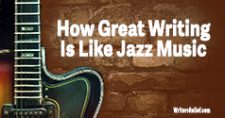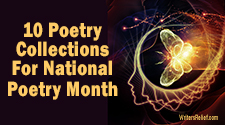
Fact versus fiction—when you’re writing historical fiction or creative nonfiction, the line between the two can become murky! Both creative nonfiction and historical fiction deal with facts of the past, and both are written with the intent to engage the reader. But at Writer’s Relief, we know these two genres have very different stances on factual accuracy. Here’s what you need to know when writing historical fiction vs. creative nonfiction.
Historical Fiction And Creative Nonfiction: The Differences
Creative nonfiction is a true story (nonfiction) written artfully like a well-crafted short story or novel. The “creative” part of the genre’s name is important to its definition—storytelling is what distinguishes an essay or creative nonfiction book from a research paper or textbook. A creative nonfiction author uses writerly techniques (building tension, masterful pacing)—but is telling a true story exactly as it happened, rather than a fictional, made-up story. All the characters, event details, and quotes must be 100 percent true, based in thorough research and verifiable by credible sources.
Historical fiction is a fictional story that takes place in the past. While the setting and certain events may be based in truth, the overall plot and most (if not all) of the characters will be invented by the author. There are different schools of thought as to how far in the past a story must be set to be considered historical fiction—some writers feel historical fiction must be set dozens or even hundreds of years in the past, while others are willing to include stories that take place less than a decade ago. Historical fiction can also include touches from other genres, such as fantasy. Research will also be important to historical fiction, as the writer will want to make their historical setting as immersive and authentic as possible.
Creative Nonfiction And Historical Fiction: The Similarities
Of course, there will always be some similarity in writing creative nonfiction and historical fiction. Here are some of our best tips for historical writers in both genres:
Build a detailed setting. Writing about the past can be tricky because it’s not always a place or time that modern readers can relate to. The best way to bridge the gap between modern readers and historical writing is to make the historical setting feel as immersive and realistic as possible.
Keep up the pacing. Because historical writing requires so many explanations and details, readers may feel bogged down and bored if the pace moves too slowly. While the details in historical writing are important, pay attention to your overall pacing—make sure you’re balancing narrative information with action.
Find the right balance in your tone. Getting the tone right in historical writing can be challenging. You might be tempted to write a historical story in a formal, old-fashioned manner to match the time period. But this type of historical writing can often feel very stilted and inaccessible, leaving readers unable to fully engage with your work. However, writing in a purely modern style could detract from the historical atmosphere of your piece, leaving readers unable to suspend their disbelief.
Research, research, research! Whether you’re writing historical fiction or creative nonfiction, thorough research will always be your foundation. Find a list of resources to get started here.
Are You Writing Historical Fiction Or Creative Nonfiction?
Both genres rely on careful research and fact-checking. Historical fiction can involve real events and characters, while creative nonfiction should read like a novel even though it’s 100 percent true. Creative nonfiction uses techniques of fiction writing to build a more interesting story, while historical fiction is made more believable by the inclusion of facts. Is your head spinning? We’re not surprised! To determine which genre your project falls under, ask yourself these simple questions:
Did you make up any characters, events, places, or dialogue? If the answer is yes, you’re writing historical fiction. Every tiny detail in creative nonfiction must be factually accurate. (In fact, many nonfiction books don’t include dialogue, as exact conversations can be difficult to verify!)
Have you added to or subtracted from the facts of a historical situation? Creative nonfiction will focus on only the facts of a situation, with no embellishment. And while you can’t include every detail, even in creative nonfiction, if you’ve strayed too far from the facts, it’s more likely your project is a fictional work.
Are you sharing your opinions and interpretations or simply the facts of a situation? No two writers’ perspectives are the same, nor are the opinions of two or more historians. Still, creative nonfiction will always be focused on the facts, exactly as they happened, without bias or judgment in reporting them.
By knowing the important similarities and differences between historical fiction and creative nonfiction, your writing will be accurate, engaging, and perfectly suited for the readers in your genre.
Question: Was the last historical work you read historical fiction or creative nonfiction? What was the title?




















Good explanation, thanks!
I agree with your opinion that by understanding the key similarities and differences between historical fiction and creative nonfiction, you can ensure that your writing is accurate, engaging, and appropriate for the readers in your genre. Thank you so much for your great article.